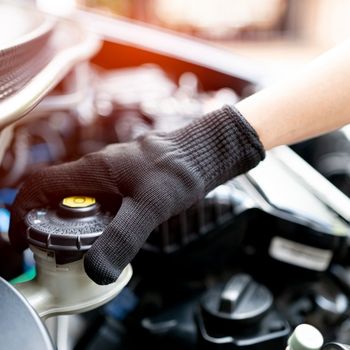 Modern vehicles rely on multiple types of fluids to ensure smooth and efficient performance, from engine oil that reduces friction to transmission, brake, and power steering fluids that support critical operations. Over time, these essential liquids begin to degrade, thickening and collecting debris. When this happens, their effectiveness diminishes, potentially increasing wear and tear on your vehicle.
Modern vehicles rely on multiple types of fluids to ensure smooth and efficient performance, from engine oil that reduces friction to transmission, brake, and power steering fluids that support critical operations. Over time, these essential liquids begin to degrade, thickening and collecting debris. When this happens, their effectiveness diminishes, potentially increasing wear and tear on your vehicle.
In addition to regular maintenance routines, periodic fluid flushes are highly recommended. Staying on top of these services can significantly extend the lifespan of your car. Here's what you need to know about fluid flushes.
The Importance of a Fluid Flush
Fluid flushes play a crucial role in maintaining your vehicle’s longevity. As contaminants build up in your car’s systems, the efficiency of these fluids declines. Continued use of degraded fluids can lead to increased wear and tear, reduced lubrication, and potential damage to vital components. Simply adding more fluid won’t solve the problem—what remains must be removed and replaced with fresh, clean liquid. Maintenance schedules offer general guidelines, but it’s wise to regularly inspect your fluids for color and quality. Environmental factors such as location, driving habits, and weather can accelerate fluid degradation or cause it to collect more debris.
Transmission Fluid
Transmission fluid plays a key role in transferring power from the engine to the wheels while ensuring seamless gear shifts. This fluid also lubricates the transmission system, allowing it to function smoothly. Depending on your vehicle model, transmission fluid should generally be flushed every 30,000 to 100,000 miles. However, if you frequently drive under challenging conditions, make numerous short trips, or tow heavy loads, you’ll likely need more frequent flushes. Neglecting this service can result in dirt and debris accumulating in the fluid, clogging the transmission system, and causing significant wear that may necessitate costly repairs or replacements. Fresh transmission fluid is typically reddish or pink, while old, contaminated fluid appears black or brown.
Coolant
Also known as antifreeze, coolant is designed to regulate engine temperature and prevent overheating. It should generally be replaced every three to ten years, though vehicles manufactured before 2011 may require replacement every 50,000 to 75,000 miles. When coolant begins to look cloudy or contains visible particles, it signals the need for a flush. Old coolant can contribute to mechanical issues, including rust and overheating, which could ultimately damage your engine. Regular flushing ensures optimal cooling system performance and extends the life of your vehicle.
Power Steering Fluid
Power steering fluid is among the most durable fluids in your vehicle. However, exposure to extreme temperatures over time can degrade it faster than expected. Typically, power steering fluid has a reddish-brown hue, but degradation turns it dark black with a silvery tint. Additionally, noise when turning the wheel may indicate insufficient or degraded fluid. To stay safe and avoid costly repairs, it’s advisable to flush power steering fluid every 50,000 to 75,000 miles. This practice helps maintain smooth handling and prolongs the life of your power steering system.
Brake Fluid
Transparent in appearance, brake fluid absorbs moisture from the air and picks up debris, accelerating rust formation and wear on braking components. These factors reduce braking efficiency and increase stopping distance, posing serious risks to your safety. Darker fluid, visible dirt, or a gritty texture indicates degraded fluid that requires immediate flushing to prevent brake failure and protect your safety. Brake fluid flushes are usually performed every two to three years or every 24,000 to 36,000 miles.
Engine Oil Flush
Over time, engine oil gathers debris, becoming sludgy and gritty. This reduces lubrication, leading to greater engine stress and wear. Routine oil changes combined with an engine flush help eliminate this buildup. Signs such as smoke from the exhaust or changes in oil pressure suggest the need for a thorough system flush.
Fuel Injection Flush
A fuel injection flush removes deposits that hinder fuel efficiency, improving your vehicle’s gas mileage. Generally performed every 30,000 miles, this service enhances overall performance and helps maintain optimal fuel economy.
If you notice any of these warning signs, schedule a fluid flush during your next routine maintenance visit. Taking care of your vehicle’s fluids is a simple yet essential step toward ensuring reliability and extending its lifespan.
Pet Bed,Waterproof Dog Bed,Chew Proof Dog Bed,Pet Bed Elevated Portable
Dalian CS Logistics Technology Co., Ltd , https://www.dlcsem.com